Thick, dark clouds and a slight
drizzle greeted me as I, along with other passengers, deplaned at Iloilo’s new
airport. It wasn’t exactly the kind of welcome I expected. Gloomy as it was, I
stopped myself from fretting. Why, it was way better than what those who came
to see Pope Francis at the airport in Tacloban experienced a week earlier!
 Stepping
out of the airport, I quickly hailed a cab and gave instructions to the driver.
On our way to downtown Iloilo, I caught glimpses of the ongoing construction
boom in the city—all in preparation for the forthcoming conference of the Asia-Pacific
Economic Cooperation (APEC) this October, which Iloilo will host.
Stepping
out of the airport, I quickly hailed a cab and gave instructions to the driver.
On our way to downtown Iloilo, I caught glimpses of the ongoing construction
boom in the city—all in preparation for the forthcoming conference of the Asia-Pacific
Economic Cooperation (APEC) this October, which Iloilo will host.
 |
Injap Tower, the tallest building in Western Visayas
|
|

 Twenty
minutes later, I reached my destination, Circle Inn Hotel and Suites.
At the front desk, I got a bit irked when the receptionist told me that
my room wasn’t available
yet—what a way to treat a guest who has fully paid in advance! I had no choice but to wait and take a breather at the poolside even if my patience was running out.
Twenty
minutes later, I reached my destination, Circle Inn Hotel and Suites.
At the front desk, I got a bit irked when the receptionist told me that
my room wasn’t available
yet—what a way to treat a guest who has fully paid in advance! I had no choice but to wait and take a breather at the poolside even if my patience was running out.
 I
tried to keep my cool for it was difficult to find a decent
accommodation in another hotel during that time (Good thing, there was a
vacancy at Injap Tower Hotel where I transferred the following day).
I
tried to keep my cool for it was difficult to find a decent
accommodation in another hotel during that time (Good thing, there was a
vacancy at Injap Tower Hotel where I transferred the following day).
After wasting thirty minutes of my time, the staff finally ushered me into a nice and clean suite. I then
ordered lunch and started unpacking my stuff. Then came snooze time. Feeling rested, I went out for a walk later.
Destination? Smallville!
 |
Benigno
Aquino Avenue
|
|
|
 |
Iloilo sizzles at night
| | | |
|
|

Nah, it’s not Superman’s hometown;
it’s a popular dining and entertainment strip where locals and tourists alike
gravitate to grab a bite, gulp a drink and get chummy with family and friends.
Smallville originally referred to the strip of restaurants, bars, cafes, and
clubs beside a business hotel. Today, the entire complex goes by that name.
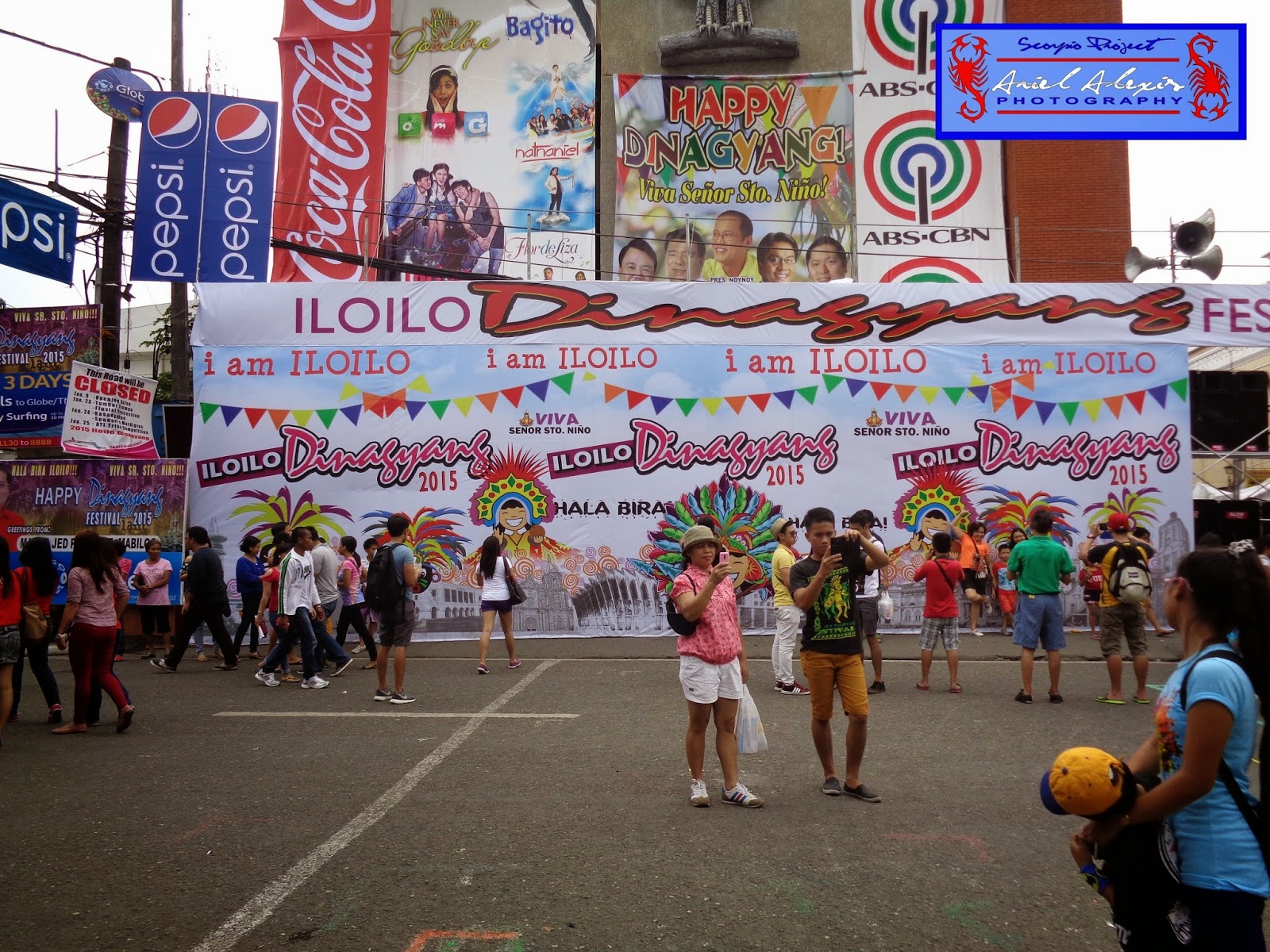
 It
was almost dusk when I reached the place. When I got there, the crowds were
already starting to fill every comfortable space they could find. The influx of
people from all walks of life into Smallville never seemed to cease. When night
came, the city’s popular enclave was already crawling with party animals out to
paint the town red.
It
was almost dusk when I reached the place. When I got there, the crowds were
already starting to fill every comfortable space they could find. The influx of
people from all walks of life into Smallville never seemed to cease. When night
came, the city’s popular enclave was already crawling with party animals out to
paint the town red.
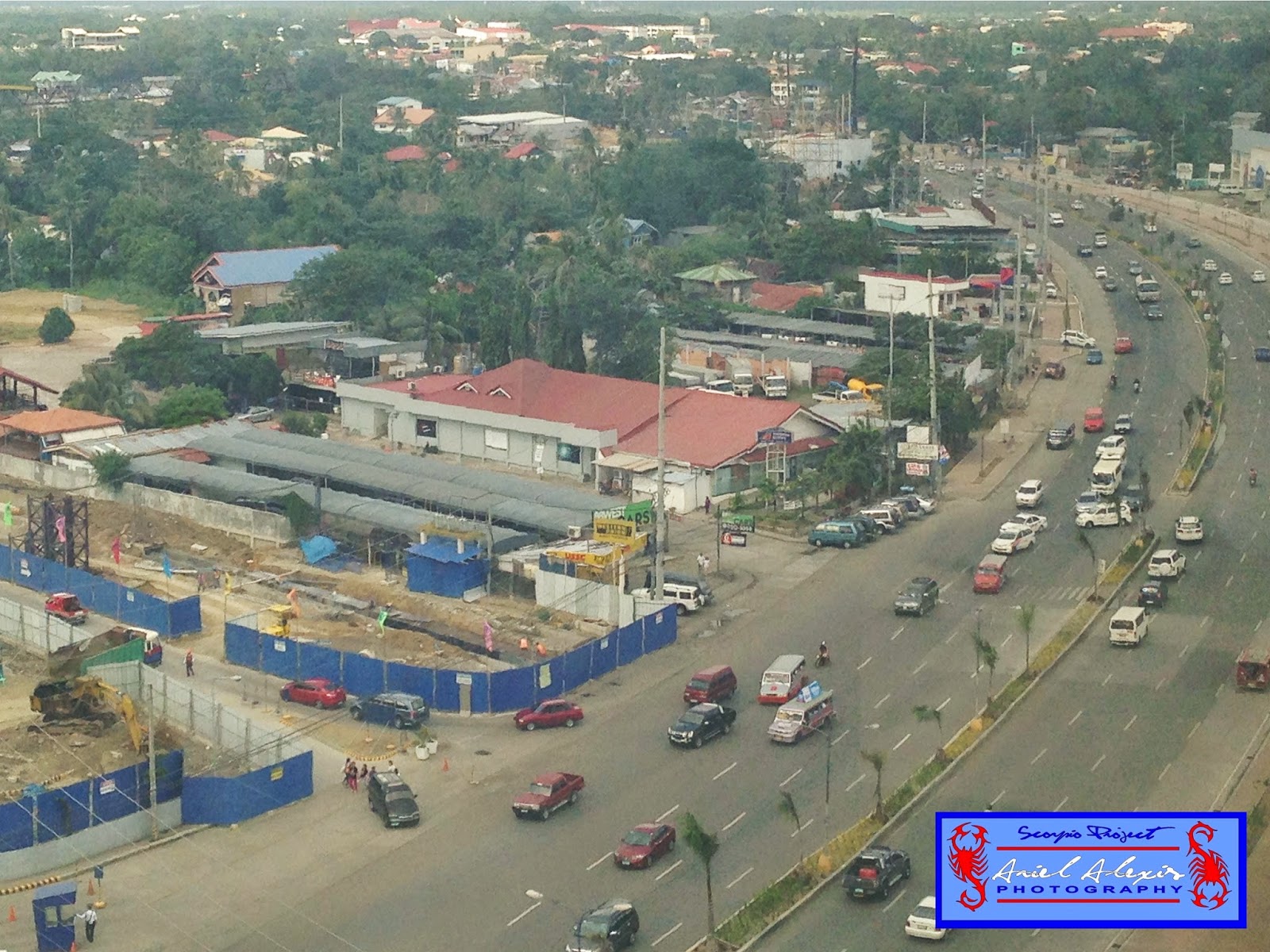 |
A glimpse of Mandurriao, one of Iloilo's flourishing districts
| |

 Everywhere
I looked, the mood was festive for it was the eve of Iloilo’s most important event.
Somehow, I managed to find a little corner to chill out while waiting for Mia,
a good friend from Bacolod who’s already based in Iloilo. We spent the evening
listening to techno music being played by the bar’s in-house DJ while downing a
few bottles of beer. We left the place before midnight.
Everywhere
I looked, the mood was festive for it was the eve of Iloilo’s most important event.
Somehow, I managed to find a little corner to chill out while waiting for Mia,
a good friend from Bacolod who’s already based in Iloilo. We spent the evening
listening to techno music being played by the bar’s in-house DJ while downing a
few bottles of beer. We left the place before midnight.
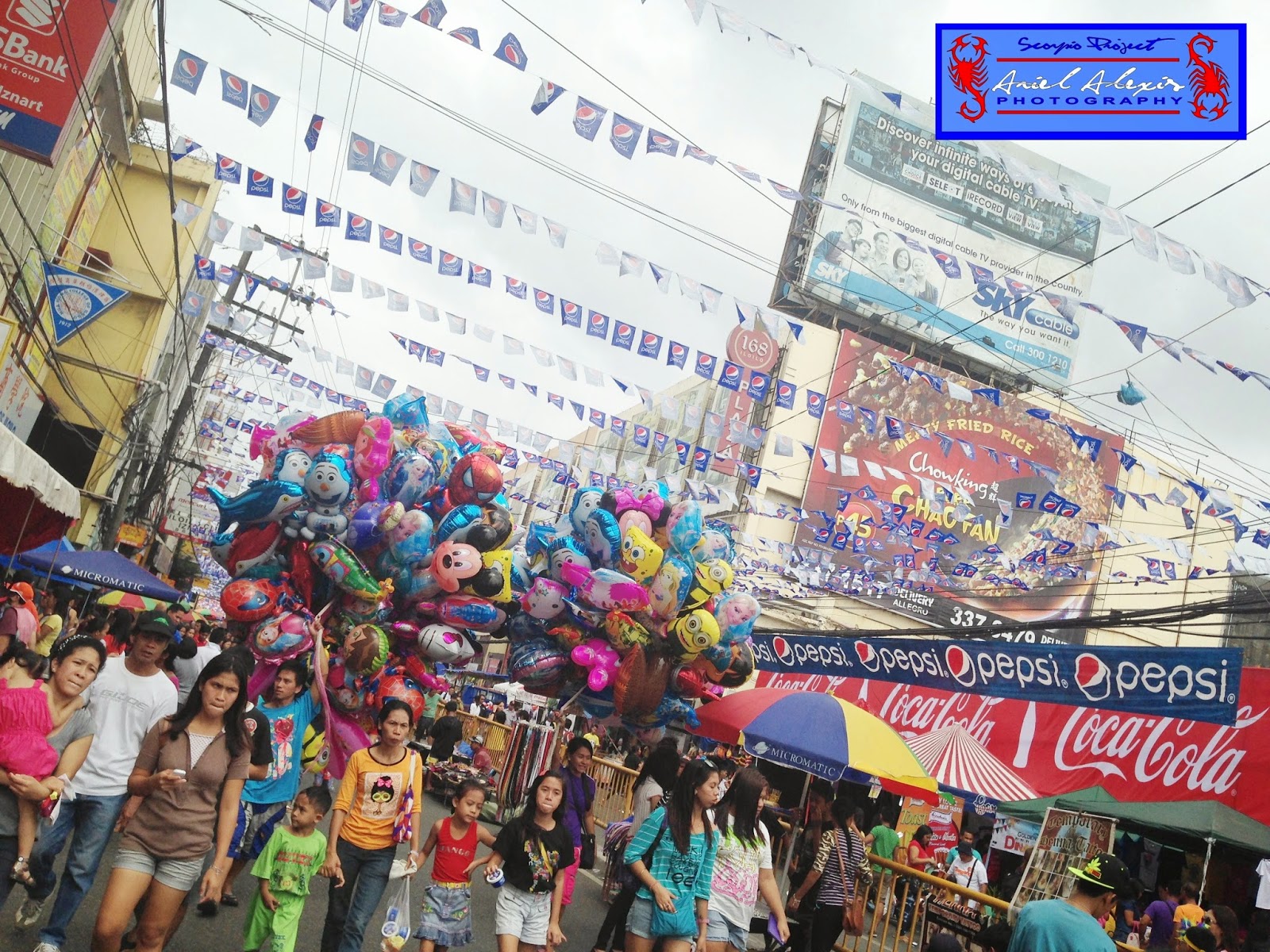
 Morning came. I was awakened by
strange noises coming from outside the room. At first, all I heard was a muted cacophony of
music, laughter and voices emanating from the streets. As I shook myself out of the stupor of a restful
sleep, the din became louder, noisier, wilder. Quickly, I got out of bed and
rolled up the blinds that shielded the window from outside light.
Morning came. I was awakened by
strange noises coming from outside the room. At first, all I heard was a muted cacophony of
music, laughter and voices emanating from the streets. As I shook myself out of the stupor of a restful
sleep, the din became louder, noisier, wilder. Quickly, I got out of bed and
rolled up the blinds that shielded the window from outside light.
 |
A Dinagyang dancer dressed in Ati costume
|
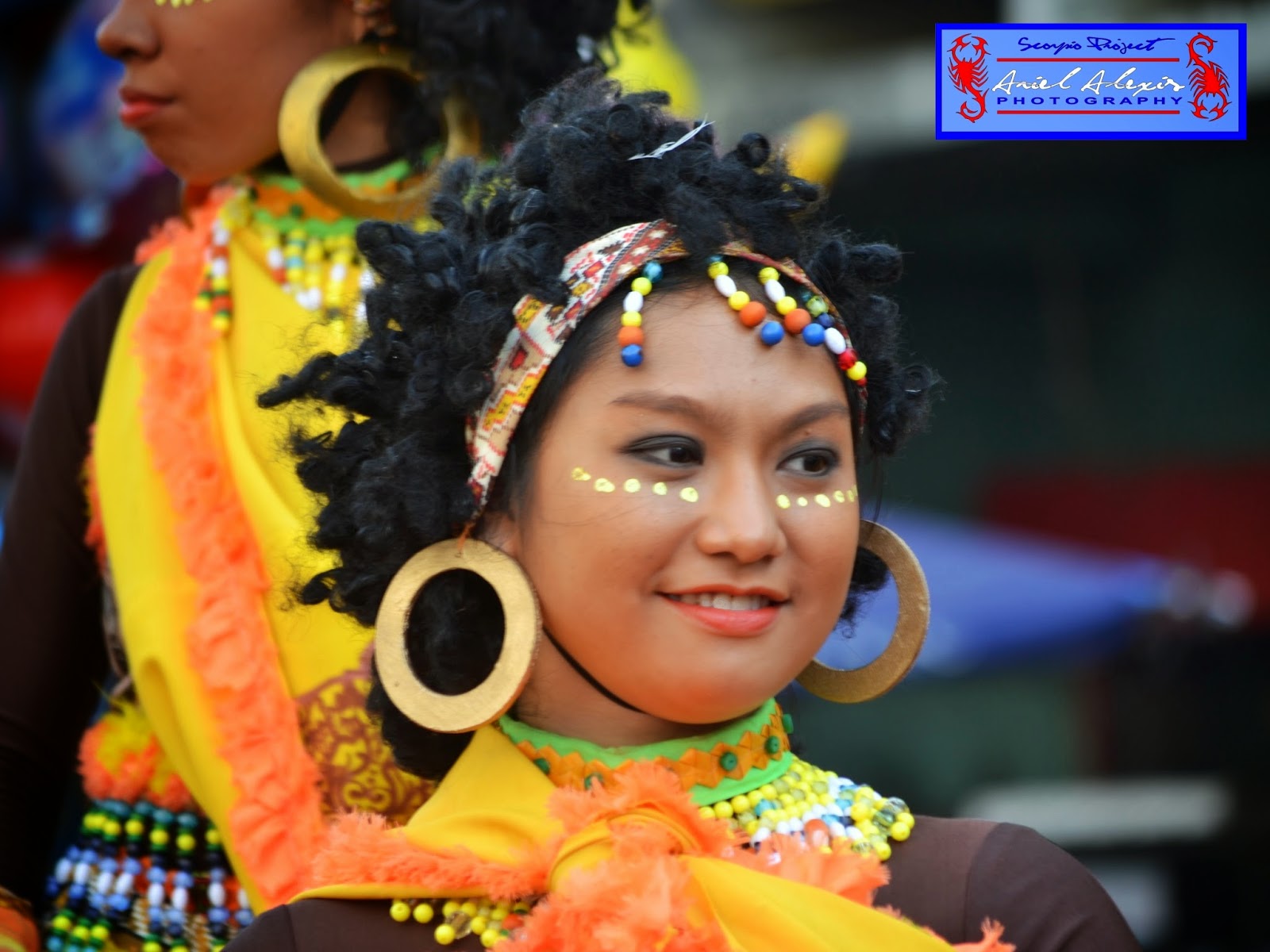 |
| "Ati" street dancer |
Then
I saw it: a vast sea of humanity garbed in red, yellow, orange, green and black
costumes. Interspersed in the colorful throngs gathered along Iznart Street are
hundreds and hundreds of drummers and musicians, street dancers, revelers and
tourists like me. From where I stood, I had a bird’s-eye-view of the spectacle
that’s about to unfold a few floors below me.
 It
was what I came for this year. I’ve been in and out of Iloilo, both the
province and city, that is, these past several years but I haven’t witnessed
such a grand display of pomp and pageantry. Whew, I was brimming with
excitement as I prepared to capture and be captured by the liveliest event in
that part of the world!
It
was what I came for this year. I’ve been in and out of Iloilo, both the
province and city, that is, these past several years but I haven’t witnessed
such a grand display of pomp and pageantry. Whew, I was brimming with
excitement as I prepared to capture and be captured by the liveliest event in
that part of the world!
 In
less than an hour, I managed to take a quick shower, got dressed and grabbed a
bite—a free buffet brekkie—before rushing into the streets. Wearing my
photographer’s hat, I held on to my Nikon, eager to catch some interesting
subject as I went around the vicinity in one of my most exhilarating moments in
the city.
In
less than an hour, I managed to take a quick shower, got dressed and grabbed a
bite—a free buffet brekkie—before rushing into the streets. Wearing my
photographer’s hat, I held on to my Nikon, eager to catch some interesting
subject as I went around the vicinity in one of my most exhilarating moments in
the city.
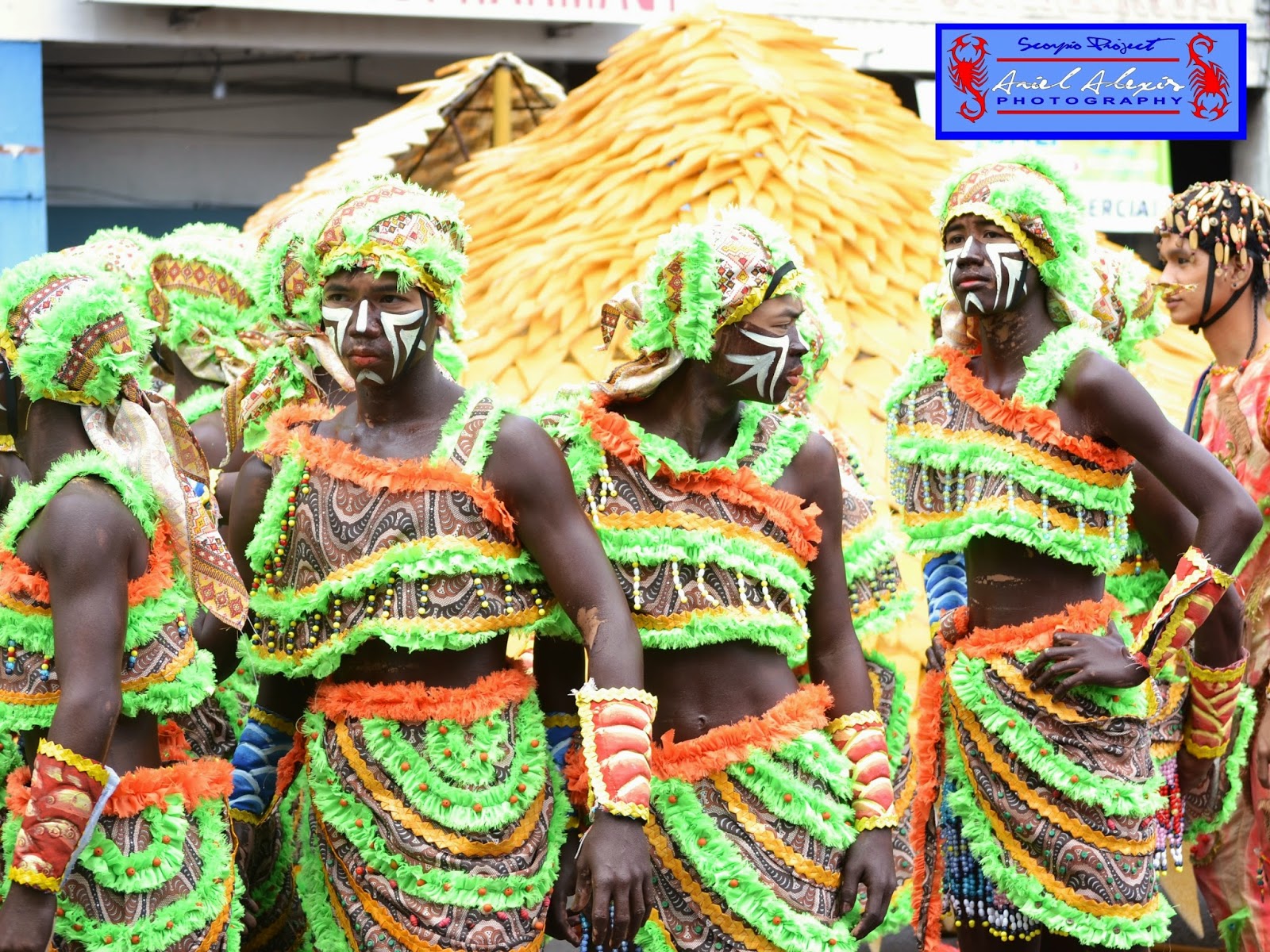 |
Ati-garbed dancers getting ready to perform
|
|
 This
is, after all, Dinagyang, the annual religious-cultural event when Ilonggos pay
homage to the Child Jesus or Sto. Niño and also commemorate the arrival of
Malay (Bornean) settlers and the subsequent selling of Panay Island to them by
the original inhabitants of the place, the Ati, the dark-skinned indigenous
people of the island.
This
is, after all, Dinagyang, the annual religious-cultural event when Ilonggos pay
homage to the Child Jesus or Sto. Niño and also commemorate the arrival of
Malay (Bornean) settlers and the subsequent selling of Panay Island to them by
the original inhabitants of the place, the Ati, the dark-skinned indigenous
people of the island.
 In a month devoted to honoring the
Holy Child, Filipinos find themselves agog to take part in the celebrations
happening in the Visayas: Sinulog in Cebu, Ati-atihan in Aklan and of course,
Dinagyang in Iloilo. I’m one of those so exhilarated to have made it to Iloilo
and taken part in Dinagyang.
In a month devoted to honoring the
Holy Child, Filipinos find themselves agog to take part in the celebrations
happening in the Visayas: Sinulog in Cebu, Ati-atihan in Aklan and of course,
Dinagyang in Iloilo. I’m one of those so exhilarated to have made it to Iloilo
and taken part in Dinagyang.
 |
"Ati" dancers of Tribu Ilawodnon
| | | |
|
|

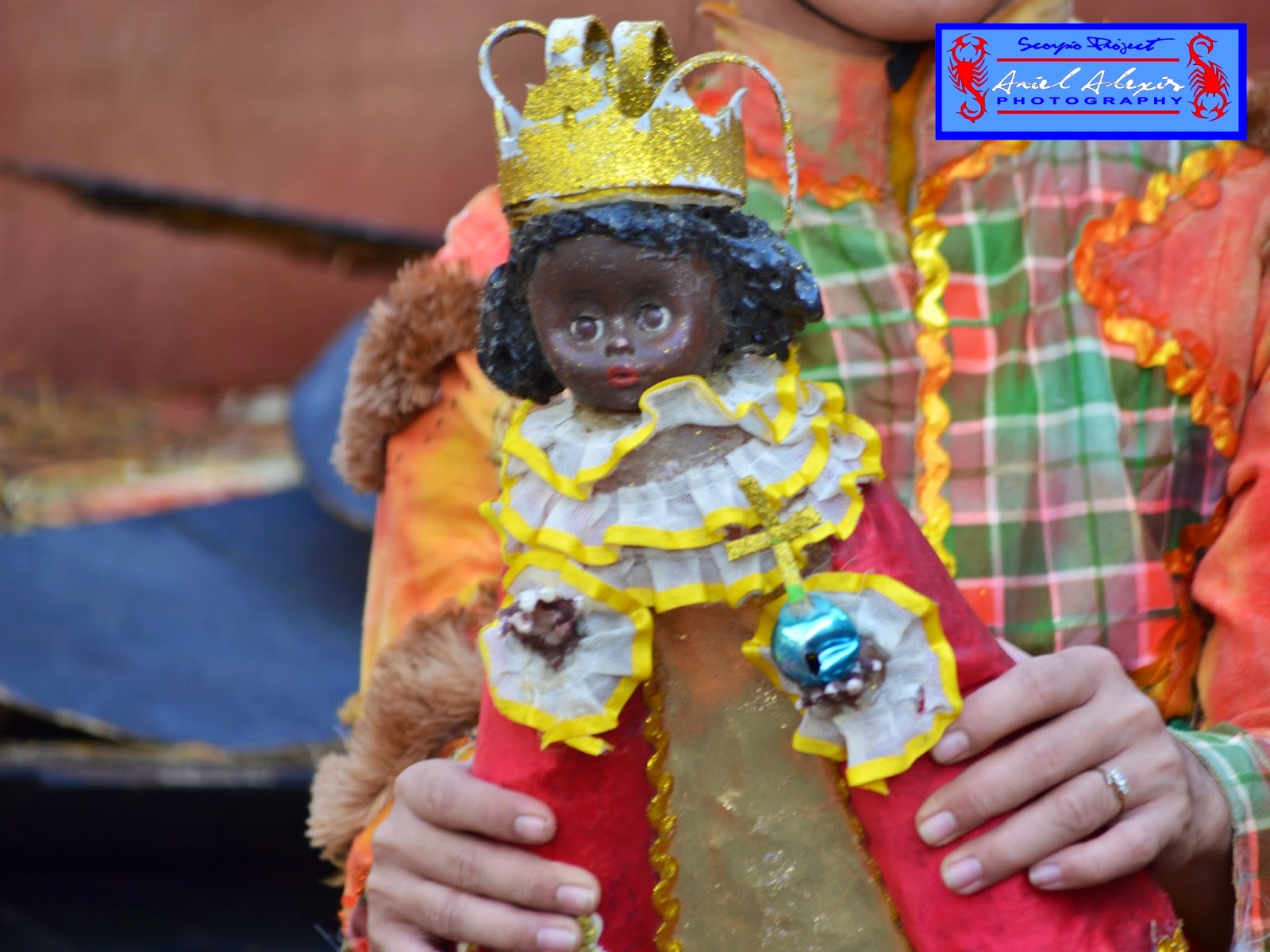
Dinagyang, which means “revelry” or
“merrymaking” among Ilonggos, is Iloilo’s version of Aklan’s Ati-Atihan.
Although it’s not as popular as the other two festivals, Dinagyang, for me, is
probably the liveliest and most exciting because of the breathtaking street
dancing competition among the tribes of Panay. I really had a blast joining the
celebration, digging all the wonderful things I witnessed there.
 |
| "Ati" street dancer |
Both
provinces are found in Panay, hence, their festivities celebrate almost the
same historical events: the arrival of the Sto. Niño and the coming of the
Malays and selling of Panay. Dinagyang, however, boasts of three major events: the
Ati-Atihan Street Dancing Contest, the Kasadyahan Street Parade, and the coronation of Miss Dinagyang.
 Nine
participating groups, representing the tribes of Panay, took part in the street
dancing competition. They included schools like Tribu Panayanon of the Iloilo
City National High School; Tribu Paghidaet of La Paz National High School; Tribu
Obreros of Barrio Obrero National High School; Tribu Ilawodnon of Fort San
Pedro National High School; and Tribu Salognon of Jaro National High School.
Nine
participating groups, representing the tribes of Panay, took part in the street
dancing competition. They included schools like Tribu Panayanon of the Iloilo
City National High School; Tribu Paghidaet of La Paz National High School; Tribu
Obreros of Barrio Obrero National High School; Tribu Ilawodnon of Fort San
Pedro National High School; and Tribu Salognon of Jaro National High School.
 |
Live entertainment at an Iloilo mall
|

 Other
competitors came from communities/villages such as Tribu Baybayanon of Barangay
Calaparan in Villa de Arevalo; Tribu Atub-Atub of Barangay Veterans Village in
Iloilo City; Tribu Ilonganon of Abanilla Street in Iloilo City; and Tribu
Milagrosa of Passi City.
Other
competitors came from communities/villages such as Tribu Baybayanon of Barangay
Calaparan in Villa de Arevalo; Tribu Atub-Atub of Barangay Veterans Village in
Iloilo City; Tribu Ilonganon of Abanilla Street in Iloilo City; and Tribu
Milagrosa of Passi City.
 There
were several judging stations spread all over the routes where the street
dancing competition took place. Unfortunately, I didn’t get to see all the participating
tribes, especially their performances. It was difficult to get through the
thick crowds who came to witness the competition so I decided to stick it out at the fifth judging station, which is near my hotel.
There
were several judging stations spread all over the routes where the street
dancing competition took place. Unfortunately, I didn’t get to see all the participating
tribes, especially their performances. It was difficult to get through the
thick crowds who came to witness the competition so I decided to stick it out at the fifth judging station, which is near my hotel.
 For
the third time in a row, Tribu Panayanon emerged as champion, taking home a
cash prize of Php150,000, plus a chance to represent the Dinagyang Festival and
Iloilo in various prestigious events not only in the Philippines but also abroad.
Tribu Ilawodnon, which I covered before the competition started, managed to
land as a runner-up.
For
the third time in a row, Tribu Panayanon emerged as champion, taking home a
cash prize of Php150,000, plus a chance to represent the Dinagyang Festival and
Iloilo in various prestigious events not only in the Philippines but also abroad.
Tribu Ilawodnon, which I covered before the competition started, managed to
land as a runner-up.
 Meanwhile,
the Kasadyahan street dance parade is Dinagyang’s unique feature,
celebrated a day before the Ati-Atihan
street dancing contest, usually the last Sunday of January. It is the Ilonggos’
way of expressing their gratitude to God for the bountiful harvest. For more
about Dinagyang, visit the official website at http://dinagyangsailoilo.com.
Meanwhile,
the Kasadyahan street dance parade is Dinagyang’s unique feature,
celebrated a day before the Ati-Atihan
street dancing contest, usually the last Sunday of January. It is the Ilonggos’
way of expressing their gratitude to God for the bountiful harvest. For more
about Dinagyang, visit the official website at http://dinagyangsailoilo.com.
 |
One of the paintings that featured Pope Francis at Museo Iloilo
|
|
This
recent escapade to Iloilo not only afforded me the chance to experience
Dinagyang but also revisit some of the city’s popular tourist destinations,
which I’m fond of seeing, particularly Museo Iloilo and one of Iloilo’s
must-see districts, Jaro.
Museo
Iloilo is home to a spectacular collection of Iloilo’s cultural heritage which
includes stone age native pottery; fossils, jewelry and clothing; trade pottery from neighboring
countries; war memorabilia, including old weapons; and some Spanish-era
Filipino sculptures.
It also features several religious
life-sized and small statues, reliefs and other artifacts. But it's the Santo
Entierro or the Dead Christ encased in a glass coffin that caught my fancy.
Whew, it closely resembled a dead body, especially with the shriveled skin at
its shoulders!
 |
One of the paintings featuring the pope
| |
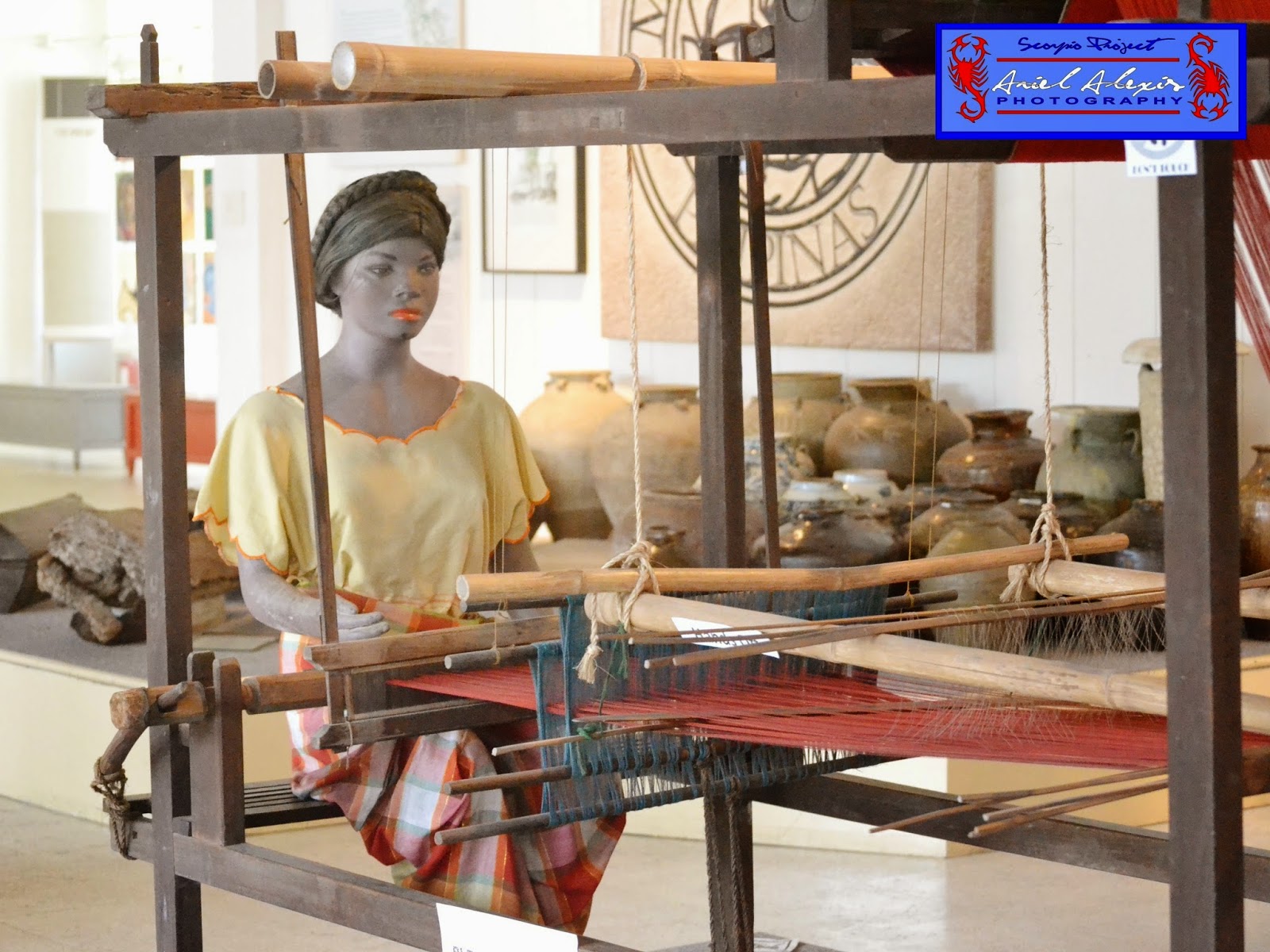
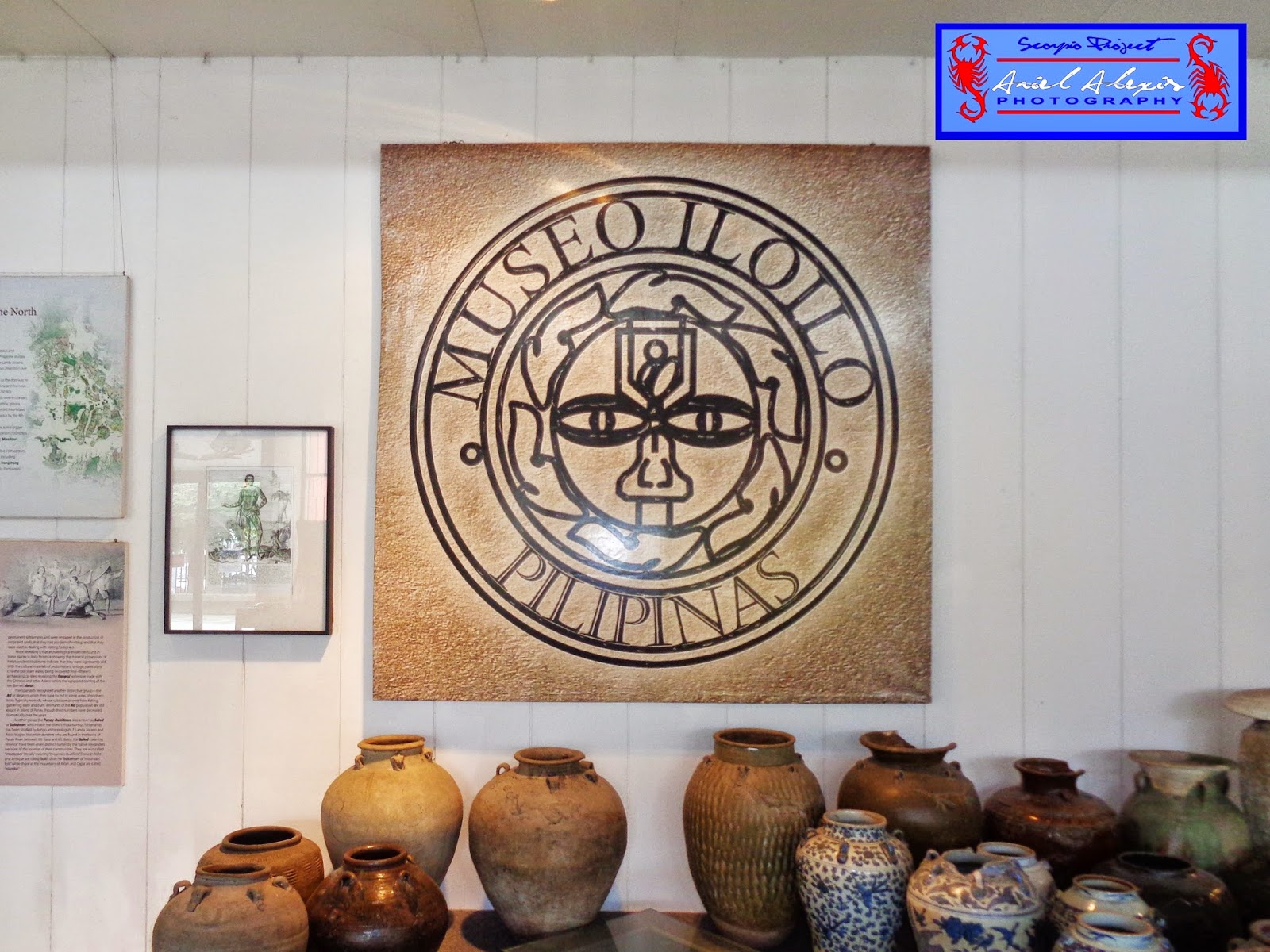
Aside
from these, there are other interesting stuff that’s going to lure culture
vultures to this tourist enclave, such as the special section that served as
display area of the paintings featuring Pope Francis—all creations of Ilonggo
artists.
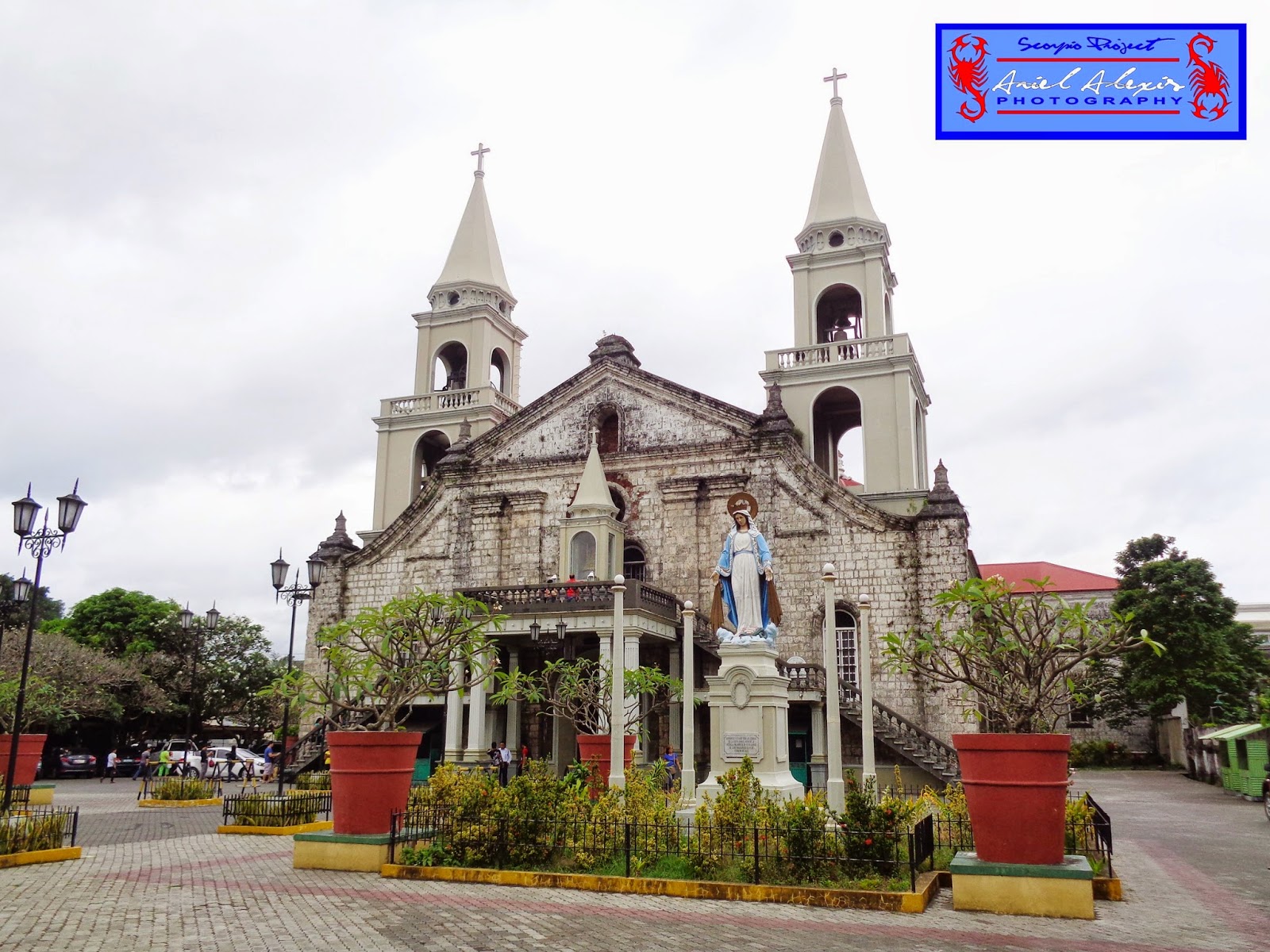 |
Our Lady of the Candles Shrine a.k.a. Cathedral of St. Elizabeth of Hungary in Jaro
|
|
 Jaro, on the other hand,
has always been a part of my itinerary whenever I’m in Iloilo. I always look
forward to seeing the place again and again. What’s so special about Jaro that
warrants a revisit? Well, there’s the Gothic-Renaissance church named after St.
Elizabeth of Hungary a.k.a. Jaro Cathedral.
Jaro, on the other hand,
has always been a part of my itinerary whenever I’m in Iloilo. I always look
forward to seeing the place again and again. What’s so special about Jaro that
warrants a revisit? Well, there’s the Gothic-Renaissance church named after St.
Elizabeth of Hungary a.k.a. Jaro Cathedral.
 Completed in 1864, the church, which
also happens to be the National Shrine of
Our Lady of the Candles (Nuestra Señora de la Candelaria), boasts of a
red-brick belfry (built earlier in 1744), which is among the few religious
structures in the Philippines that were constructed separately from the main
church.
Completed in 1864, the church, which
also happens to be the National Shrine of
Our Lady of the Candles (Nuestra Señora de la Candelaria), boasts of a
red-brick belfry (built earlier in 1744), which is among the few religious
structures in the Philippines that were constructed separately from the main
church.
For
more about this cathedral, visit http://ourladyofcandlesnationalshrine.com/about-2/a-parish-a-cathedral-and-a-national-shrine.
 |
Interior of the Jaro Cathedral
|
|

 Lastly, I couldn’t consider my
Dinagyang experience complete unless I see one of the reasons why Ilonggos
celebrate it—the icon of the Child Jesus which is housed at the Sto. Niño de
Villa Arevalo Church.
Lastly, I couldn’t consider my
Dinagyang experience complete unless I see one of the reasons why Ilonggos
celebrate it—the icon of the Child Jesus which is housed at the Sto. Niño de
Villa Arevalo Church. 